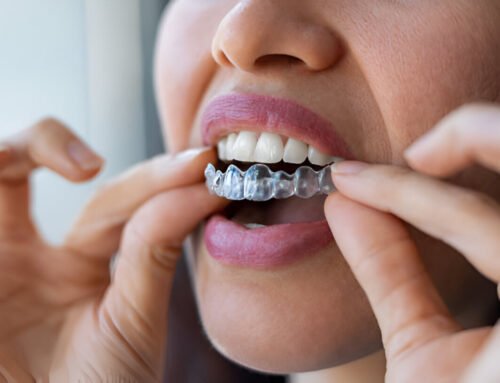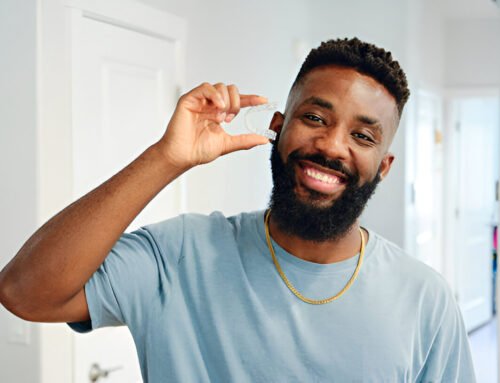Does Invisalign Give You a Lisp? What to Expect
Invisalign is a popular orthodontic treatment that uses clear aligners to straighten teeth. Many people prefer it over traditional braces because it is nearly invisible and can be removed. However, some patients worry that Invisalign might affect their speech. This article will explore whether Invisalign can cause a lisp, why it happens, and what you can do to overcome it.
Why Do Some Patients Experience a Lisp?
When you start wearing Invisalign aligners, you might notice a slight lisp. A lisp occurs when your tongue does not position correctly in your mouth while speaking. This can disrupt airflow and cause certain sounds to be pronounced differently. For example, “s” and “z” might sound like “th” or “l.”
The aligners change the space in your mouth, which can cause your tongue to move differently around your teeth. This new movement can lead to a lisp. Fortunately, this issue is usually temporary.
How Long Does a Lisp Last?
Each patient is different, but most people find that their lisp goes away within a few weeks. Some adjust in a few days, while others might take a bit longer. If the lisp continues beyond a few weeks, it might be due to an ill-fitting aligner. In that case, it is best to consult your dentist.
Can Lisps Be Fixed?
Yes, lisps caused by Invisalign can be fixed. Here are a few tips to help you adapt to your aligners and reduce your lisp:
- Keep Talking: The more you speak with your aligners in, the quicker your tongue will adjust. Try reading aloud or having conversations with family and friends.
- Practice Tongue Exercises: Simple exercises can help your tongue adapt to the aligners. For example, practice saying words with “s” and “z” sounds.
- Stay Mindful: Pay attention to how you are speaking and try to correct your tongue’s position as you talk.
- Remove Aligners When Necessary: If you have an important meeting or event, you can temporarily remove your aligners. Just make sure to wear them for at least 20-22 hours a day.
How Much Does It Cost for Invisalign?
Specific Lisp Types and Invisalign
There are different types of lisps, and understanding them can help you address the issue more effectively:
- Dentalised Lisp: Occurs when the tongue pushes against the front teeth. Invisalign might actually help correct this type of lisp over time.
- Lateral Lisp: Caused by uneven airflow over the tongue. This might need more focused exercises to fix.
- Interdental Lisp: Happens when the tongue pushes between the front teeth spaces. Aligners can sometimes help reposition the tongue correctly.
- Palatal Lisp: Results from the tongue pushing against the roof of the mouth. Exercise and time can help here as well.
Is Invisalign Worth It?
Speech Improvement Techniques
If your lisp persists, there are several techniques you can try:
- Reading Aloud: This helps your tongue adapt to the new space created by the aligners.
- Enunciation Practice: Focus on pronouncing words clearly and correctly.
- Tongue Exercises: Specific exercises can help strengthen your tongue and improve its positioning.
- Using Straws: Drinking through a straw can help train your tongue to stay in the correct position.
Can You Chew Gum with Invisalign?
Professional Help
If these methods do not help, it is important to consult your dentist. They can check the fit of your aligners and suggest further actions. Sometimes, they might recommend seeing a speech-language pathologist for additional exercises and therapy.
Comparing Invisalign with Other Treatments
Invisalign is just one option for straightening teeth. Traditional braces and lingual braces are other alternatives. Traditional braces are more visible, while lingual braces are placed behind the teeth. Each has its pros and cons, but many people prefer Invisalign for its discreet appearance and ease of use.
Can You Get Invisalign on the NHS?
Conclusion
While Invisalign might cause a temporary lisp, it is usually a minor and short-lived issue. Most patients adjust quickly and find that their speech returns to normal. By practising speaking, doing exercises, and consulting your dentist if needed, you can overcome any speech difficulties. Invisalign remains a popular and effective choice for straightening teeth without the hassle of traditional braces.
If you are considering Invisalign and are worried about a lisp, remember that any speech issues are typically temporary and manageable. With a little practice and patience, you can enjoy the benefits of a straighter smile without a significant impact on your speech.
Contact us today for consultation
Get Started with Invisalign at Broxburn Smile Centre
Are you ready to transform your smile with Invisalign? At Broxburn Smile Centre, we provide expert orthodontic care to help you achieve the perfect smile. Our experienced team will guide you through every step of your Invisalign journey, ensuring you get the best results. Contact us today to book your consultation and take the first step towards a confident, lisp-free smile!











